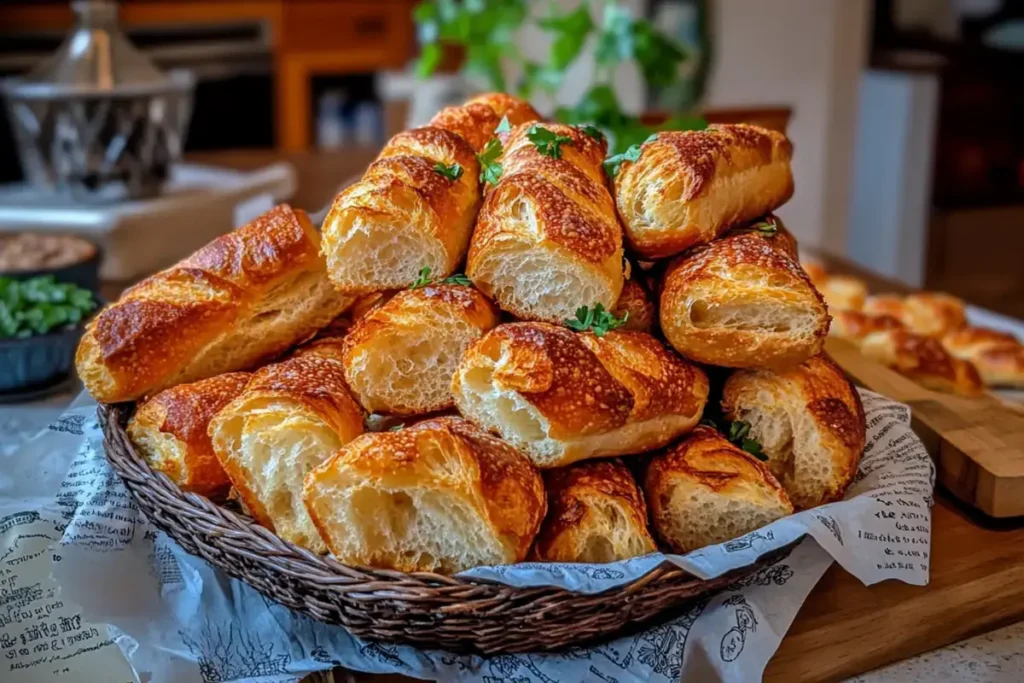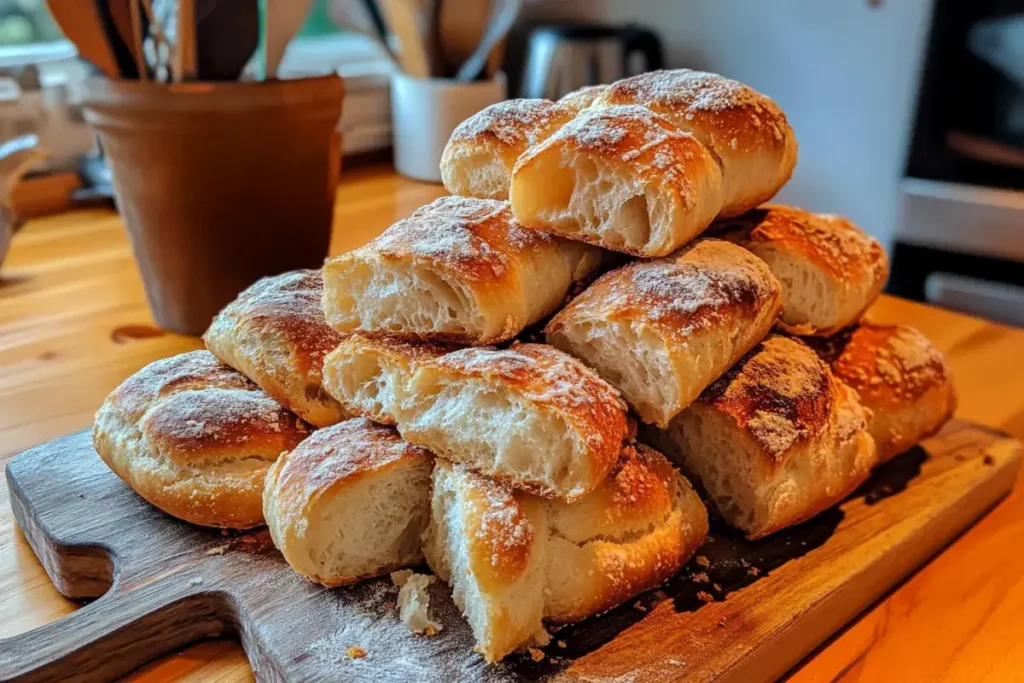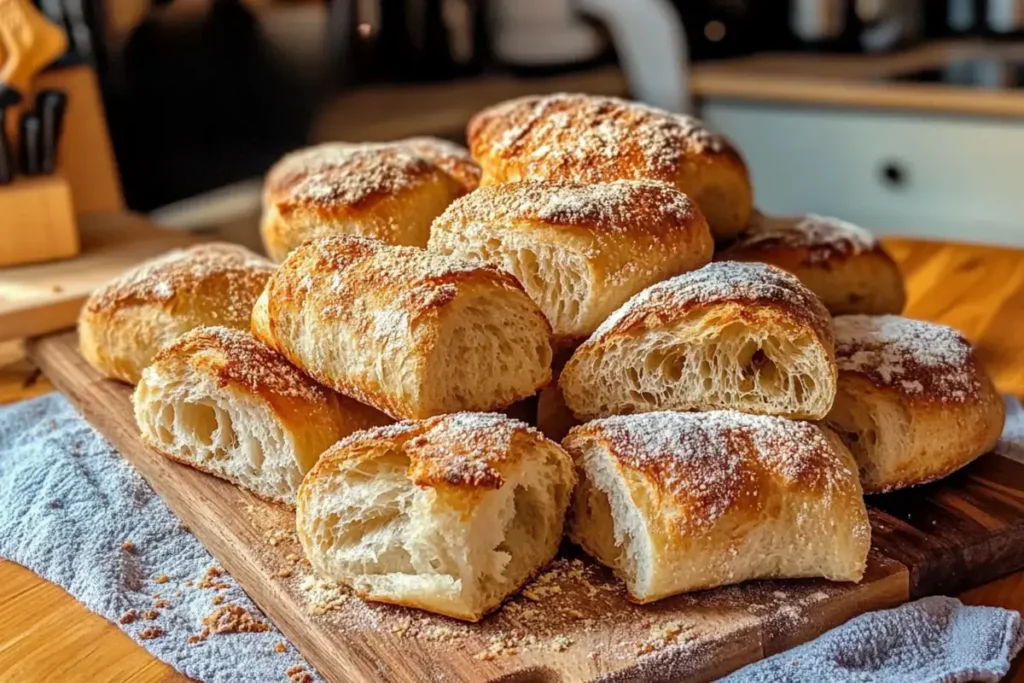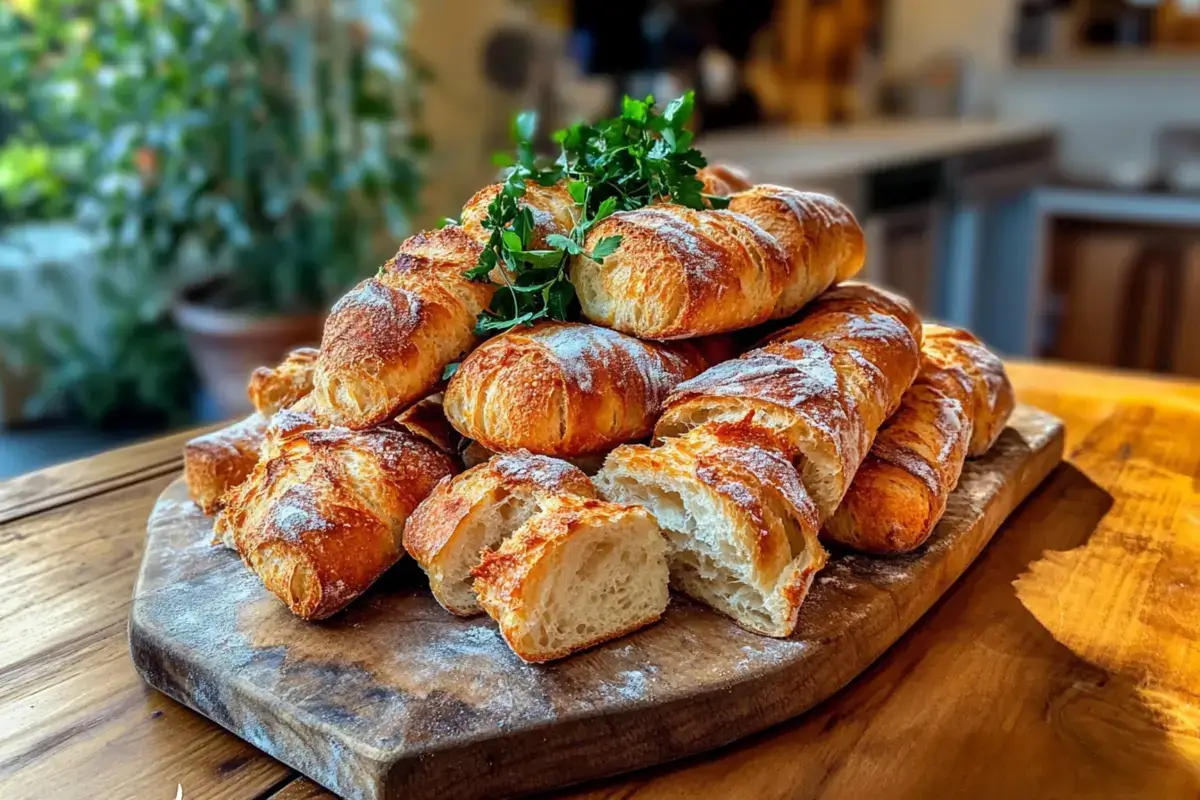Hey friends, it’s Jessika from Boldy Recipes! Ciabatta rolls have been a staple in my kitchen for years, and I’m constantly amazed by how versatile they are. These rustic Italian rolls with their crispy crust and airy, hole-filled interior are so much more than just sandwich bread. Let me share exactly what makes ciabatta rolls special and how I use them to elevate everything from weeknight dinners to weekend brunch.
The Perfect Sandwich Roll
Let’s start with the obvious: ciabatta rolls make exceptional sandwiches. Their sturdy, crispy crust holds up beautifully to moist fillings without getting soggy, while those signature air pockets absorb just enough sauce and juice to add flavor without falling apart.
I reach for ciabatta rolls when making Italian subs, grilled paninis, and my personal favorite a simple caprese sandwich with fresh mozzarella, tomatoes, basil, and balsamic glaze. The bread’s mild flavor complements ingredients rather than competing with them, making it ideal for showcasing quality meats, cheeses, and vegetables.
The key is using these rolls fresh or lightly toasting them. That crisp exterior provides structural integrity that sliced sandwich bread simply can’t match.

Exceptional for Dipping
Those irregular holes throughout ciabatta? They’re not a flaw they’re perfect for soaking up soups, sauces, and oils. I always serve ciabatta rolls alongside minestrone, tomato soup, or any broth-based dish.
For appetizers, I slice ciabatta rolls and brush them with olive oil and garlic, then toast until golden. These become incredible vehicles for bruschetta toppings, tapenades, or simply high-quality olive oil with balsamic vinegar. The open crumb structure traps every drop of flavor.
Game-Changing Garlic Bread
Forget standard French bread ciabatta makes the best garlic bread I’ve ever made. Split the rolls horizontally, slather them with butter mixed with fresh garlic, parsley, and a pinch of salt, then broil until bubbling and golden.
The irregular texture means some parts get extra crispy while others stay soft and buttery. Every bite is different, and that’s exactly what makes it so good. I serve this alongside pasta dishes, and it disappears within minutes.
Burger Buns with a Twist
I’ve started using ciabatta rolls as gourmet burger buns, and my family loves them. The sturdy structure handles juicy burgers without disintegrating, and the artisanal texture makes even a simple burger feel restaurant-quality.
Toast the cut sides on the grill or in a skillet first. This creates a barrier against moisture while adding a smoky, crispy element. They work particularly well with Italian-style burgers topped with mozzarella, marinara, and basil.

Breakfast Sandwiches Done Right
Ciabatta rolls aren’t just for lunch and dinner. I use them for elevated breakfast sandwiches think scrambled eggs with prosciutto and arugula, or a classic bacon, egg, and cheese with a smear of pesto.
The bread’s texture holds hot ingredients well, and it feels more substantial than English muffins or bagels without being heavy. Toast them lightly and you’ve got a breakfast that feels special enough for weekend brunch but quick enough for busy mornings.
Croutons and Breadcrumbs
Got stale ciabatta rolls? Don’t throw them away. They make phenomenal croutons and breadcrumbs. Cut them into cubes, toss with olive oil, salt, and Italian herbs, then bake until crispy. These croutons add serious texture to Caesar salads and creamy soups.
For breadcrumbs, let the rolls dry completely, then pulse in a food processor. Use them to top baked pasta dishes or as a coating for chicken cutlets. The irregular texture creates a rustic, crunchy coating that’s far superior to store-bought breadcrumbs.
Storage and Freshness Tips
Ciabatta rolls are best eaten the day you buy or bake them. If you need to store them, keep them in a paper bag at room temperature for up to two days. Never refrigerate it makes them stale faster.
For longer storage, freeze them in a zip-top bag for up to three months. Thaw at room temperature and refresh in a 350°F oven for 5-7 minutes to restore that crispy crust.

FAQs
Q: Can ciabatta rolls be used for sliders?
A: Absolutely! Look for smaller ciabatta rolls or cut regular ones into slider-sized portions. They’re perfect for Italian-style sliders.
Q: Are ciabatta rolls healthy?
A: They’re made from simple ingredients flour, water, yeast, salt, and olive oil. They’re lower in sugar and fat than many enriched breads.
Q: What’s the difference between ciabatta rolls and regular Italian bread?
A: Ciabatta has a wetter dough, creating those signature air pockets and a chewier texture with a crispier crust.
Q: Can I make my own ciabatta rolls at home?
A: Yes! The dough is wet and sticky, which makes it challenging but definitely doable with practice and a good recipe.

